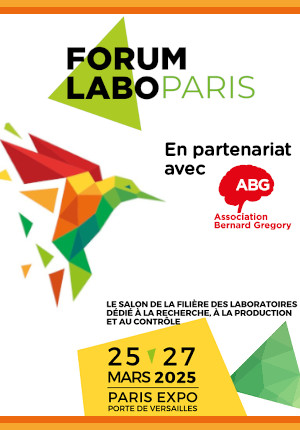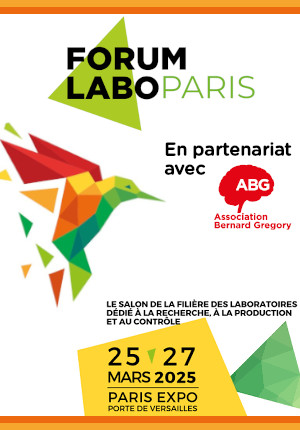Dispersion de traceurs dans l'océan global // Tracer dispersion in the global ocean
|
ABG-128697
ADUM-60982 |
Thesis topic | |
| 2025-02-18 |
Sorbonne Université SIM (Sciences, Ingénierie, Médecine)
Palaiseau Cedex - France
Dispersion de traceurs dans l'océan global // Tracer dispersion in the global ocean
- Earth, universe, space sciences
transport et mélange, turbulence océanique
transport and mixing, ocean turbulence
transport and mixing, ocean turbulence
Topic description
Les tourbillons océaniques à mésoéchelle (O(100) km) contiennent la plus grande partie de l'énergie cinétique dans l'océan. La sous-mésoéchelle (échelles inférieures à O(10) km), en revanche, se manifeste par des tourbillons plus petits et plus rapides, ainsi que des filaments et des fronts (par ex. de température) et est importante à la fois par les transports verticaux intenses de traceurs qu'elle induit que par son rôle dans les transferts d'énergie entre échelles [Lapeyre & Klein, 2009]. L'observation des caractéristiques fines de l'océan de surface à l'échelle planétaire est désormais possible grâce au satellite SWOT qui mesure la hauteur de la mer (SSH) avec une résolution effective inégalée de 6km [Fu et al. 2024]. L'innovation apportée par cet instrument suggère la possibilité d'une vision globale des propriétés de transport de traceurs à fine échelle dans l'océan. Cela soulève néanmoins de nouveaux défis scientifiques en relation avec l'interprétation de ces données. En effet, la SSH ne fournit qu'une estimation des courants eulériens à travers l'équilibre géostrophique, équilibre pas forcément valide à fine échelle. De plus, les vitesses géostrophiques sont non-divergentes par construction et ne permettent donc pas de détecter et quantifier l'accumulation de matériaux particulaires (tels les polluants ou des débris plastiques) à la surface de l'océan.
Les approches lagrangiennes pour aborder ces questions sont complémentaires car elles intègrent le signal dans le temps le long des trajectoires des particules fluides. En particulier, on peut tester l'accord entre les régimes de dispersion de flotteurs observés et les prédictions issues de la théorie de la turbulence quasi-géostrophique à mésoéchelle [Foussard et al. 2017, Maalouly et al. 2023]. Les écarts à ces prédictions vont alors fournir des informations sur l'interaction entre les processus rapides non-géostrophiques (type ondes internes), non résolus par le satellite, et les processus géostrophiques plus lents.
Cette thèse, qui s'inscrit dans un projet plus large associé à SWOT, a pour but d'étudier l'effet des mouvements non-géostrophiques sur les propriétés de dispersion de traceurs à l'échelle globale. A partir d'une simulation numérique réaliste de dernière génération (LC4320 JPL/NASA) et au moyen d'outils statistiques lagrangiens provenant des théories de la turbulence dans des fluides, on déterminera la variabilité géographique et saisonnière du transport et de la dispersion à la surface de l'océan. On examinera l'impact des mouvements non-géostrophiques à travers différentes techniques de filtrage des champs de vitesses advectant les traceurs. Une attention particulière sera portée au phénomène d'agglomération de particules induit par ces mouvements, récemment mis en évidence par des bouées de surface [D'Asaro et al., 2018], mais dont les mécanismes ne sont pas encore complètement compris. Pour ce faire, on s'appuiera sur une méthodologie lagrangienne que nous venons de développer [Maalouly et al. 2024] et sur des développements théoriques récents concernant les statistiques eulériennes des gradients de vitesse en turbulence compressible que l'on essaiera d'étendre au cadre lagrangien. Cette approche devrait permettre de mieux comprendre les mécanismes physiques contrôlant les processus d'agglomération de particules. L'objectif final est d'évaluer le degré de précision (en termes d'échelles spatiales) avec lequel les vitesses fournies par SWOT représentent les vitesses réelles à la surface de l'océan, ainsi que leurs propriétés turbulentes. Un développement possible de ce travail serait d'appliquer les résultats obtenus aux données SWOT en lien avec les données de bouées dérivantes.
------------------------------------------------------------------------------------------------------------------------------------------------------------------------
------------------------------------------------------------------------------------------------------------------------------------------------------------------------
Ocean mesoscale motions (scales of the order O(100) km) correspond to vortices with weekly time scales and contain most of the ocean kinetic energy. Submesoscale flows (scales below O(10) km), on the other hand, correspond to smaller and faster eddies, filaments and fronts (e.g. of temperature), which are important both for the intense vertical transport of tracers they induce and for their role in the energy transfers across scales [Lapeyre & Klein 2009]. Observing fine features of surface-ocean flows at the planetary scale has now become possible thanks to the satellite SWOT, which provides sea surface height (SSH) data at an unprecedented effective resolution of 6 km [Fu et al. 2024]. The innovation brought by this instrument suggests the possibility to characterize the fine-scale properties of tracer transport in the ocean. However, it also raises important scientific challenges related to the interpretation of these new data. Indeed, Eulerian velocities are typically estimated from SSH through geostrophic equilibrium, which is not granted to hold at fine scales. In addition, geostrophic motions are nondivergent by construction and, thus, do not allow to detect and quantify the accumulation of particulate materials (such as pollutants or plastic debris) at the surface of the ocean.
Lagrangian approaches can help shed light on these questions, as they reflect the temporal evolution of fluid parcels in the flow and hence sample processes acting on different timescales. For example, particle dispersion regimes can be predicted from quasi-geostrophic turbulence theory [Foussard et al. 2017, Maalouly et al. 2023]. Deviations from these laws can provide information on the interaction between fast non-geostrophic processes (such as internal waves), not directly resolved by the satellite, and slower geostrophic ones.
In this thesis, part of a wider research project on SWOT, we will explore the effect of non-geostrophic motions on the properties of tracer dispersion on a global scale. Using a state-of-the-art, high-resolution global-ocean numerical simulations (LC4320 JPL/NASA) and through different statistical Lagrangian indicators, we will examine the geographical and seasonal variability of transport and dispersion at the ocean surface. The impact of non-geostrophic motions will be addressed through different filtering strategies of the velocities advecting the tracers. Particular attention will be paid to the phenomenon of particle clustering, caused by these motions and recently highlighted by real surface drifters [D'Asaro et al., 2018], but whose mechanisms are not yet fully understood. This point will be examined relying on a Lagrangian methodology that we previously developed [Maalouly et al. 2024]. We will also take profit on recent theoretical advancements on the Eulerian statistics of velocity gradients in compressible turbulence and try to extend their scope to the Lagrangian framework. Through this approach we expect to gain insight into the physical processes controlling clustering. The broader aim of the work planned is to assess to what degree of accuracy (in terms of spatial scales) SWOT-derived velocity fields represent real surface-ocean currents, and their turbulent properties. It will then be possible to extend the analysis to compare experimental data from SWOT and from drifting buoys.
------------------------------------------------------------------------------------------------------------------------------------------------------------------------
------------------------------------------------------------------------------------------------------------------------------------------------------------------------
Début de la thèse : 01/10/2025
Les approches lagrangiennes pour aborder ces questions sont complémentaires car elles intègrent le signal dans le temps le long des trajectoires des particules fluides. En particulier, on peut tester l'accord entre les régimes de dispersion de flotteurs observés et les prédictions issues de la théorie de la turbulence quasi-géostrophique à mésoéchelle [Foussard et al. 2017, Maalouly et al. 2023]. Les écarts à ces prédictions vont alors fournir des informations sur l'interaction entre les processus rapides non-géostrophiques (type ondes internes), non résolus par le satellite, et les processus géostrophiques plus lents.
Cette thèse, qui s'inscrit dans un projet plus large associé à SWOT, a pour but d'étudier l'effet des mouvements non-géostrophiques sur les propriétés de dispersion de traceurs à l'échelle globale. A partir d'une simulation numérique réaliste de dernière génération (LC4320 JPL/NASA) et au moyen d'outils statistiques lagrangiens provenant des théories de la turbulence dans des fluides, on déterminera la variabilité géographique et saisonnière du transport et de la dispersion à la surface de l'océan. On examinera l'impact des mouvements non-géostrophiques à travers différentes techniques de filtrage des champs de vitesses advectant les traceurs. Une attention particulière sera portée au phénomène d'agglomération de particules induit par ces mouvements, récemment mis en évidence par des bouées de surface [D'Asaro et al., 2018], mais dont les mécanismes ne sont pas encore complètement compris. Pour ce faire, on s'appuiera sur une méthodologie lagrangienne que nous venons de développer [Maalouly et al. 2024] et sur des développements théoriques récents concernant les statistiques eulériennes des gradients de vitesse en turbulence compressible que l'on essaiera d'étendre au cadre lagrangien. Cette approche devrait permettre de mieux comprendre les mécanismes physiques contrôlant les processus d'agglomération de particules. L'objectif final est d'évaluer le degré de précision (en termes d'échelles spatiales) avec lequel les vitesses fournies par SWOT représentent les vitesses réelles à la surface de l'océan, ainsi que leurs propriétés turbulentes. Un développement possible de ce travail serait d'appliquer les résultats obtenus aux données SWOT en lien avec les données de bouées dérivantes.
------------------------------------------------------------------------------------------------------------------------------------------------------------------------
------------------------------------------------------------------------------------------------------------------------------------------------------------------------
Ocean mesoscale motions (scales of the order O(100) km) correspond to vortices with weekly time scales and contain most of the ocean kinetic energy. Submesoscale flows (scales below O(10) km), on the other hand, correspond to smaller and faster eddies, filaments and fronts (e.g. of temperature), which are important both for the intense vertical transport of tracers they induce and for their role in the energy transfers across scales [Lapeyre & Klein 2009]. Observing fine features of surface-ocean flows at the planetary scale has now become possible thanks to the satellite SWOT, which provides sea surface height (SSH) data at an unprecedented effective resolution of 6 km [Fu et al. 2024]. The innovation brought by this instrument suggests the possibility to characterize the fine-scale properties of tracer transport in the ocean. However, it also raises important scientific challenges related to the interpretation of these new data. Indeed, Eulerian velocities are typically estimated from SSH through geostrophic equilibrium, which is not granted to hold at fine scales. In addition, geostrophic motions are nondivergent by construction and, thus, do not allow to detect and quantify the accumulation of particulate materials (such as pollutants or plastic debris) at the surface of the ocean.
Lagrangian approaches can help shed light on these questions, as they reflect the temporal evolution of fluid parcels in the flow and hence sample processes acting on different timescales. For example, particle dispersion regimes can be predicted from quasi-geostrophic turbulence theory [Foussard et al. 2017, Maalouly et al. 2023]. Deviations from these laws can provide information on the interaction between fast non-geostrophic processes (such as internal waves), not directly resolved by the satellite, and slower geostrophic ones.
In this thesis, part of a wider research project on SWOT, we will explore the effect of non-geostrophic motions on the properties of tracer dispersion on a global scale. Using a state-of-the-art, high-resolution global-ocean numerical simulations (LC4320 JPL/NASA) and through different statistical Lagrangian indicators, we will examine the geographical and seasonal variability of transport and dispersion at the ocean surface. The impact of non-geostrophic motions will be addressed through different filtering strategies of the velocities advecting the tracers. Particular attention will be paid to the phenomenon of particle clustering, caused by these motions and recently highlighted by real surface drifters [D'Asaro et al., 2018], but whose mechanisms are not yet fully understood. This point will be examined relying on a Lagrangian methodology that we previously developed [Maalouly et al. 2024]. We will also take profit on recent theoretical advancements on the Eulerian statistics of velocity gradients in compressible turbulence and try to extend their scope to the Lagrangian framework. Through this approach we expect to gain insight into the physical processes controlling clustering. The broader aim of the work planned is to assess to what degree of accuracy (in terms of spatial scales) SWOT-derived velocity fields represent real surface-ocean currents, and their turbulent properties. It will then be possible to extend the analysis to compare experimental data from SWOT and from drifting buoys.
------------------------------------------------------------------------------------------------------------------------------------------------------------------------
------------------------------------------------------------------------------------------------------------------------------------------------------------------------
Début de la thèse : 01/10/2025
Funding category
Funding further details
Contrats ED : Programme blanc SU-SIM
Presentation of host institution and host laboratory
Sorbonne Université SIM (Sciences, Ingénierie, Médecine)
Institution awarding doctoral degree
Sorbonne Université SIM (Sciences, Ingénierie, Médecine)
Graduate school
129 Sciences de l'Environnement d'Ile-de-France
Candidate's profile
Le/la candidat(e) aura un Master en Océanographie Physique, Météorologie Dynamique, Géosciences ou Mécaniques des Fluides. La connaissance de langages informatiques tels que matlab, python ou fortran sera nécessaire pour l'analyse des simulations et la modélisation numérique. Une bonne maîtrise de l'anglais à l'écrit et à l'oral est demandé. Une connaîsannce du français oral serait un plus.
The candidate will have a Master in Physical Oceanography, Dynamical Meteorology, Geosciences or Fluid Mechanics. Knowledge of computer languages such as matlab, python or fortran will be needed for analysis of the simulations and numerical modelling. Good knowledge of oral and written English is required. Knowledge of oral French would be a plus.
The candidate will have a Master in Physical Oceanography, Dynamical Meteorology, Geosciences or Fluid Mechanics. Knowledge of computer languages such as matlab, python or fortran will be needed for analysis of the simulations and numerical modelling. Good knowledge of oral and written English is required. Knowledge of oral French would be a plus.
2025-05-12
Apply
Close
Vous avez déjà un compte ?
Nouvel utilisateur ?
More information about ABG?
Get ABG’s monthly newsletters including news, job offers, grants & fellowships and a selection of relevant events…
Discover our members
 Aérocentre, Pôle d'excellence régional
Aérocentre, Pôle d'excellence régional  MabDesign
MabDesign  Nokia Bell Labs France
Nokia Bell Labs France  Tecknowmetrix
Tecknowmetrix  PhDOOC
PhDOOC  Laboratoire National de Métrologie et d'Essais - LNE
Laboratoire National de Métrologie et d'Essais - LNE  Institut de Radioprotection et de Sureté Nucléaire - IRSN - Siège
Institut de Radioprotection et de Sureté Nucléaire - IRSN - Siège  ADEME
ADEME  TotalEnergies
TotalEnergies  ANRT
ANRT  Généthon
Généthon  CESI
CESI  MabDesign
MabDesign  Ifremer
Ifremer  Groupe AFNOR - Association française de normalisation
Groupe AFNOR - Association française de normalisation  CASDEN
CASDEN  ONERA - The French Aerospace Lab
ONERA - The French Aerospace Lab  SUEZ
SUEZ  Institut Sup'biotech de Paris
Institut Sup'biotech de Paris










